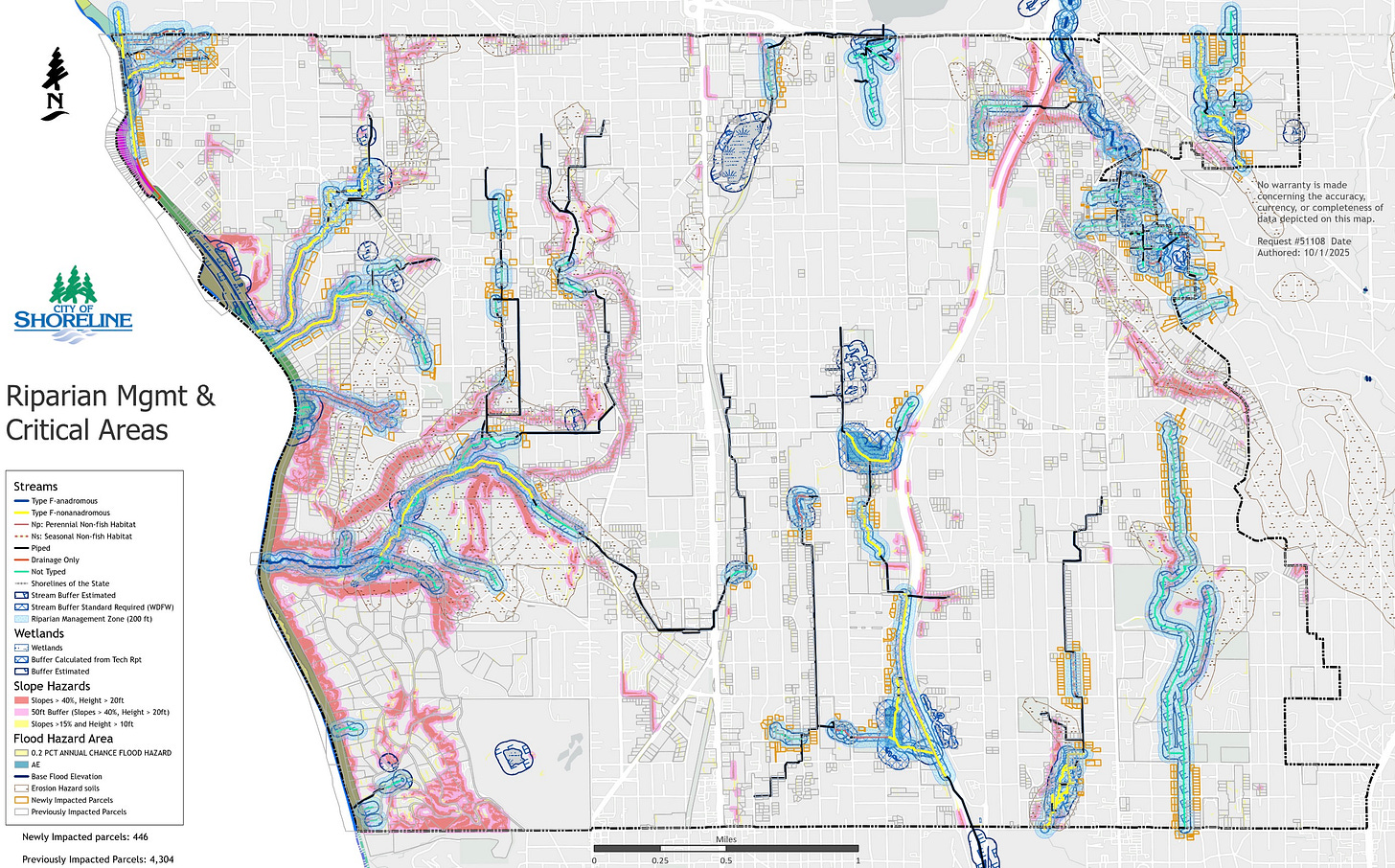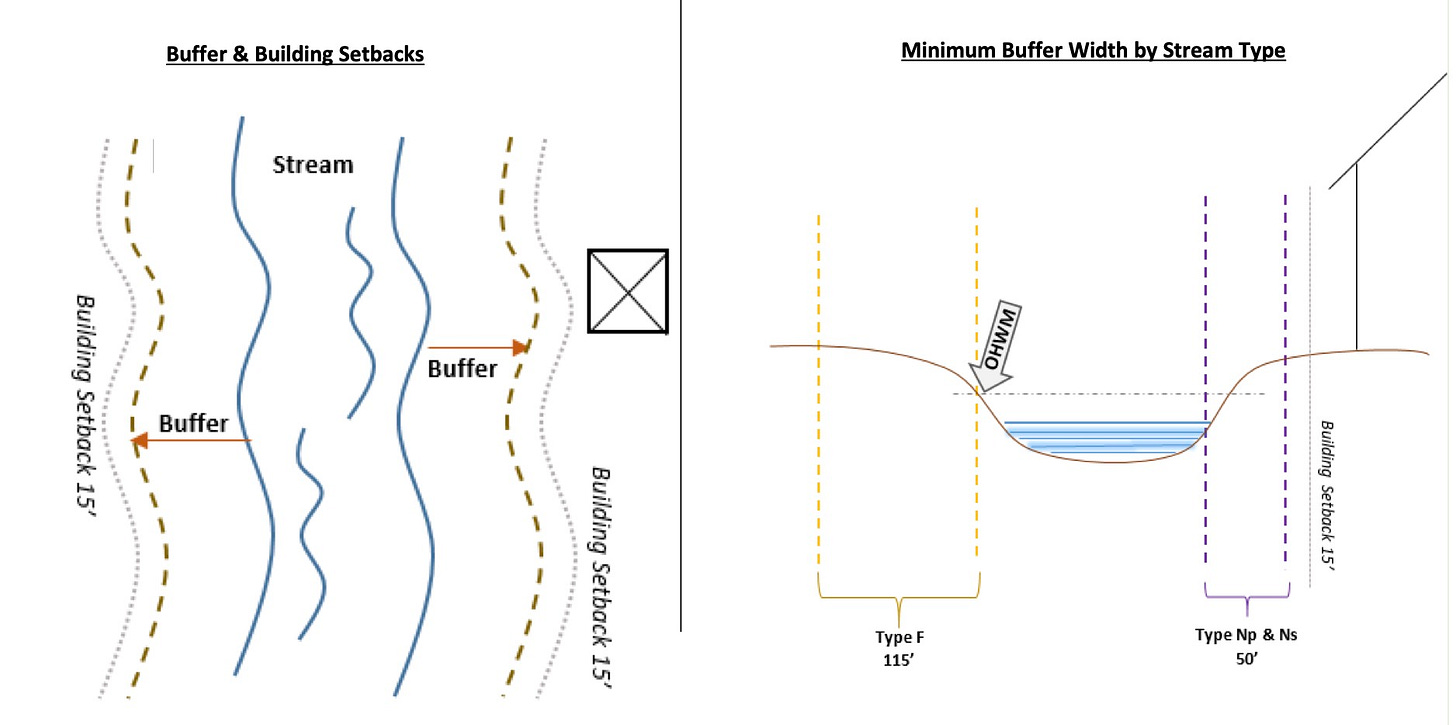City of Shoreline will expand fish-bearing stream buffers
Shoreline plans to increase the number of parcels regulated by the city’s fish-bearing stream protection code.
Shoreline’s proposed changes to the city’s Critical Areas Ordinance, will increase the regulated buffer widths near streams; expanding the buffers to 200 feet. Currently, Shoreline’s stream buffer widths ranged from 45-150 feet.
According to a map posted to the city’s website, the new 200-foot buffer will impact 446 more properties. There are currently 4,304 regulated properties citywide.

The changes are driven by new state guidelines.
Under the State Growth Management Act (GMA), all cities and counties in Washington must protect critical areas (such as fish-bearing streams) following the best available science. Since Shoreline last updated its critical areas code in 2015, the state has changed its guidelines.

Construction, clearing, grading, draining, filling, dumping, demolition, and installation of utilities are generally prohibited within a stream buffer or critical area.
Expanding areas covered by lawns is not permitted within a stream buffer zone. Planting of native species is allowed, but planting invasive species is prohibited. The use of herbicides, pesticides, and fertilizers is prohibited.
Restrictions apply only to the area within the 200-foot stream buffer. However, any permit application for a parcel that has a stream buffer may require a Critical Area Report prepared by a qualified professional to demonstrate that the proposed activities will not impact the critical area.
If property owners want to build, for example, an addition to their home such as an Accessory Dwelling Unit (ADU), they may need to build entirely outside the buffer or apply for a costly and complex Critical Areas Reasonable Use Permit (CARUP).
The CARUP process includes a special report and mitigation plan reviewed by the city and a public hearing. The permit fees cost about $23,639, not including the applicant’s costs for preparing the required technical reports.
A map showing newly impacted parcels is attached to the SEPA Environmental Checklist posted to the city’s website.
Shoreline’s critical areas code must be updated by the end of 2025 to comply.
A public hearing in front of the Planning Commission is scheduled for November 6, 2025, to review the changes. The City Council is tentatively scheduled to discuss the changes on November 24, 2025.

